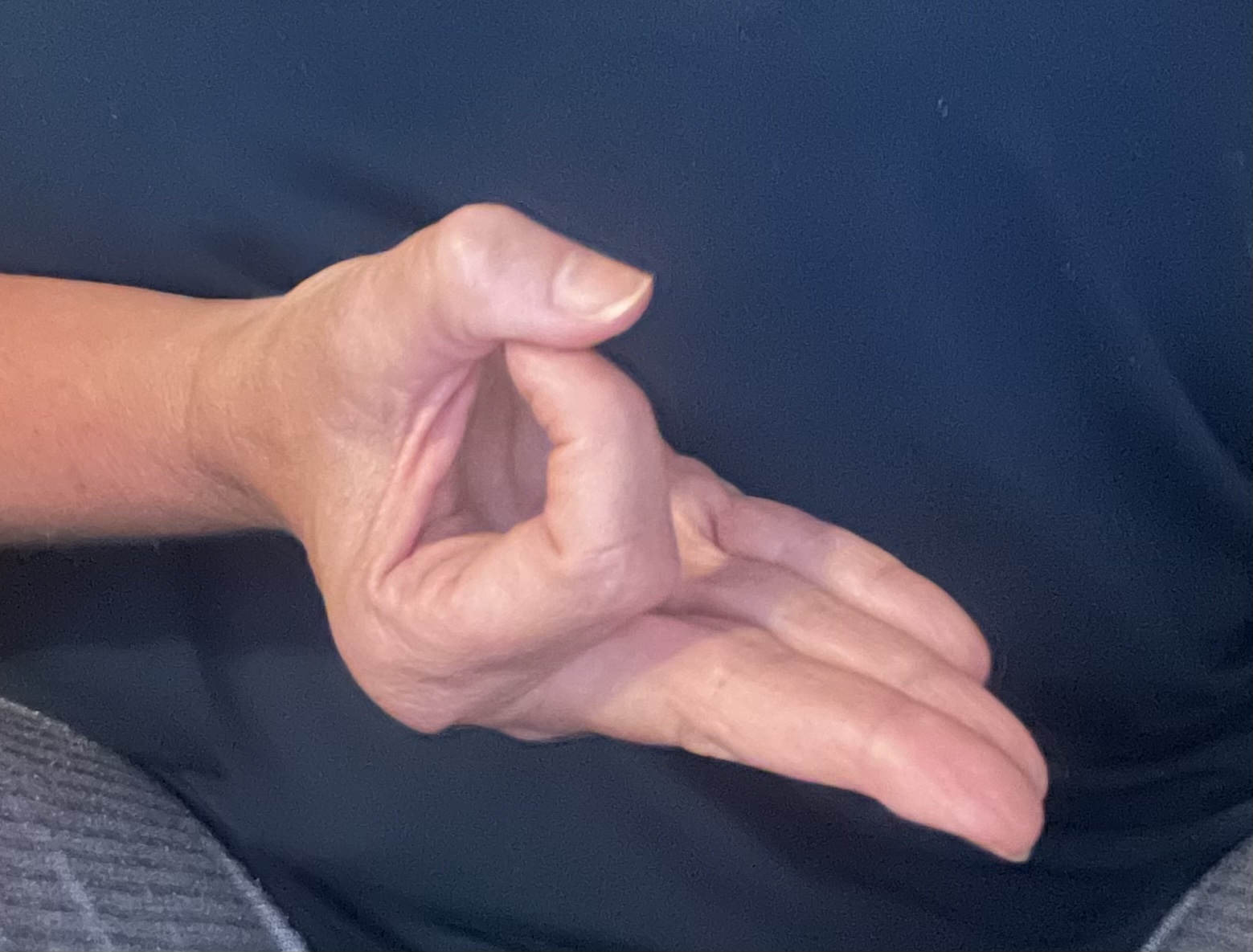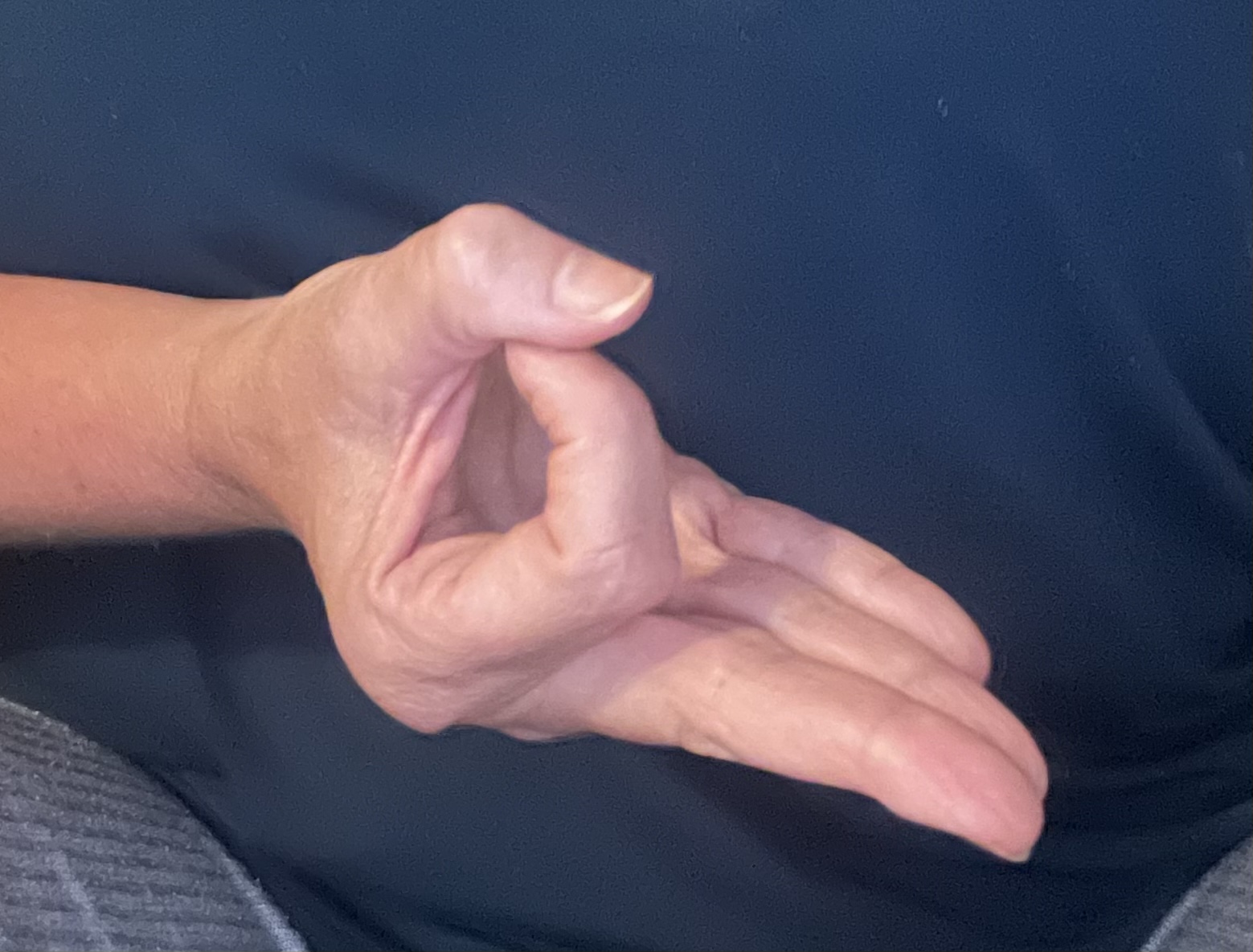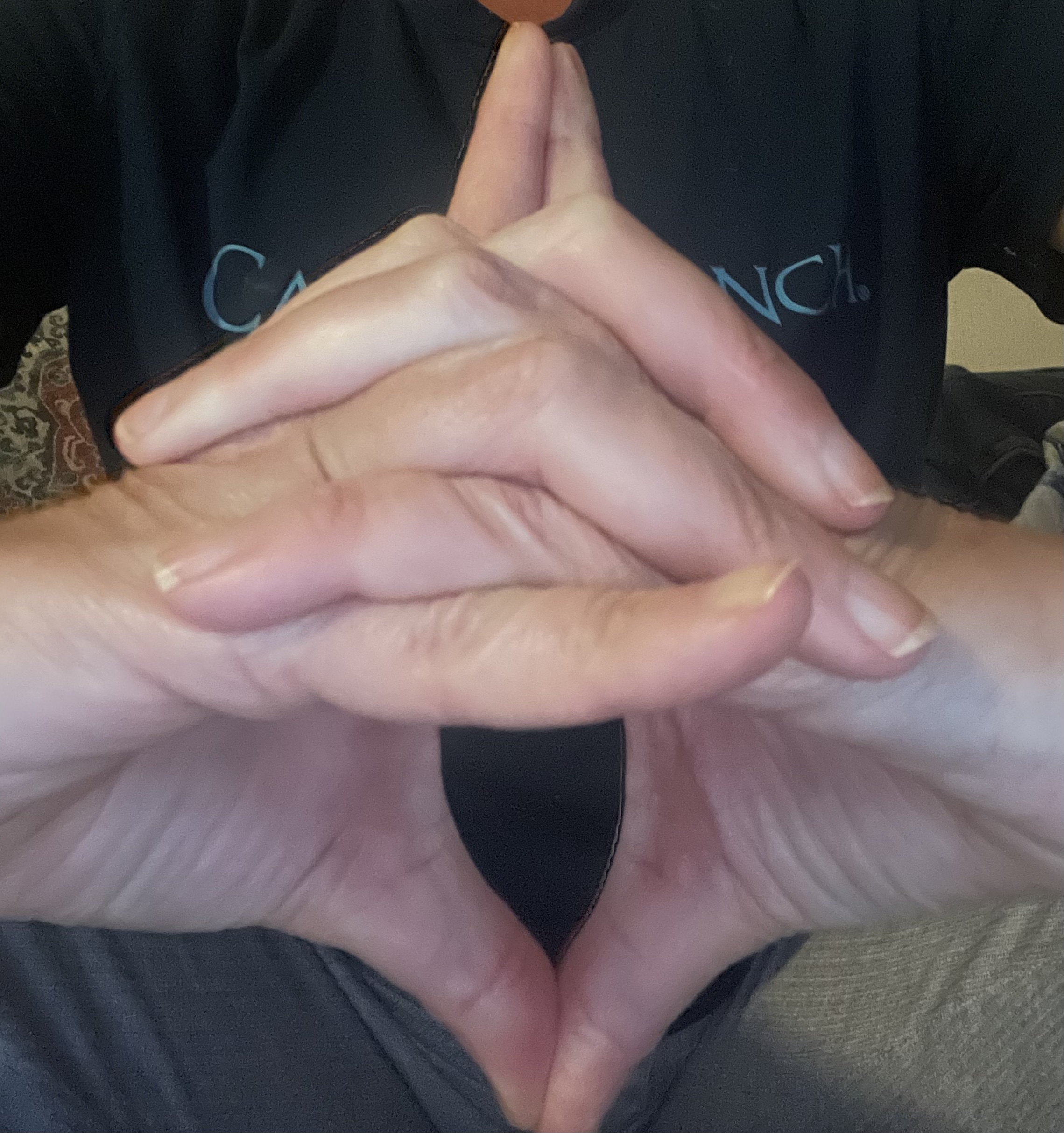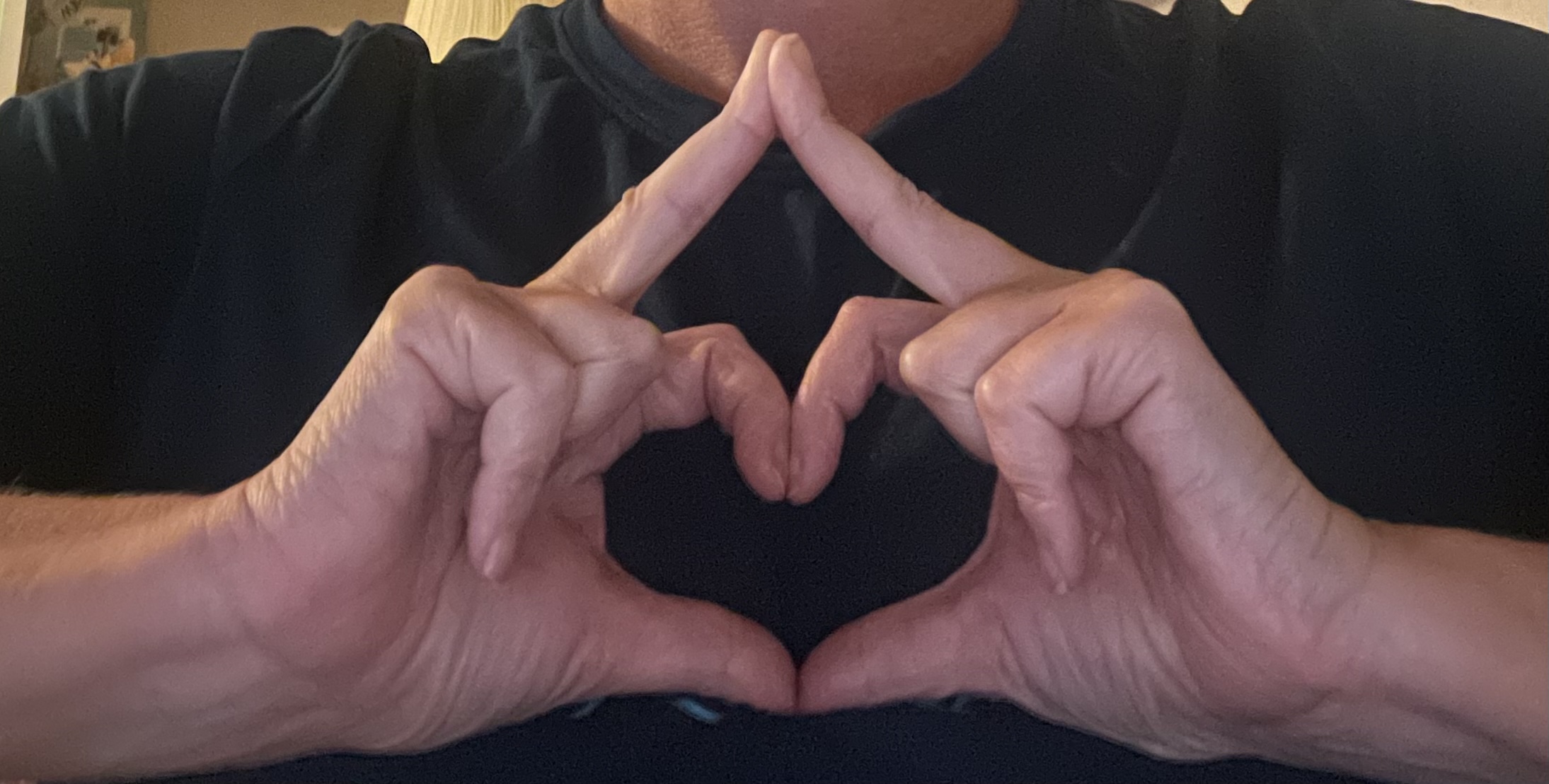5 Mudras for Calming the Mind and Reducing Anxiety
By: Steph Ball-Mitchell, E-RYT-500, RPYT, RCYT, YACEP
By: Steph Ball-Mitchell, E-RYT-500, RPYT, RCYT, YACEP, CAADC
 mudras for calming the mind
mudras for calming the mind
Yoga is a vast spiritual practice that can profoundly impact your body, mind, and soul, and one of the best methods for supporting this subtle change is through mudras. Mudras are typically hand positions in which you arrange your hands in a specific way to shift the flow of energy in your body and mind, but mudras can also involve the entire body in a particular pose.
With stress levels on the rise in modern times, it is more important than ever before to do as much as you can to support your mental health and calm your mind. Thankfully, you can deepen this healing journey from within with a few simple mudras for calming your mind. See below to learn more about mudras and learn 5 powerful mudras for calming your mind, along with answers to your burning questions about mudras! mudras for calming the mind
The word mudra in Sanskrit means “symbol of the hand,” “sign,” “seal,” or “gesture.” Mudras typically involve the hands and fingers only, but some of the mudras described in the Hatha Yoga Pradipika, an ancient yoga text, actually involve the entire body. In general, mudras are a way to invoke specific energies in your body and mind or to seal the flow of prana or lifeforce energy throughout your body. mudras for calming the mind
In Hinduism, many major deities are displayed with mudras or hand positions. In this context, the mudras symbolize the deity’s actions, powers, or deeper purpose. They typically convey a meaning in relation to the deity and are a significant component of rituals to worship various deities and to invoke the divinity in your own life. In this context, sometimes the word hasta is used interchangeably with mudra. mudras for calming the mind
Often, mudras were connected to a mantra that deepens the energetic impacts of both the mudra and the mantra. Mudras can also bind or seal the energy of the mantra into the body. Mudras are also traditionally used in Indian dancing due to their aesthetic beauty and to convey deeper meanings or symbolism in interpretive movement.
Mudras are inherently healing because they are intentional. Any action that you do to call in a specific energy or state of mind can subtly influence your subconscious mind and begin to shift your energy internally. But beyond the subtle impacts, mudras can also have a physical effect through changes in the flow of energy and gentle pressure on different points in your body.
Due to the subtle impacts of mudras on prana or lifeforce energy, they are often used during pranayama or breathing practices and meditation to exponentially increase the energetic effects of these practices on the subtle body. Using a mudra during meditation can give you a focal point for your practice and can also help you stay more alert.
To use a mudra, simply form the position with your hands or body and hold it for 5 to 15 minutes. During this time, you can practice your chosen meditation, mantra chanting, or breathing technique to deepen the healing effects of the mudra. An excellent place to start is just with slow, deep breathing with a focus on extending your exhalations.

Gyan mudra, also known as chin mudra, is one of the most well-known and popular hand mudras. This mudra is ideal for improving concentration and connecting to knowledge and higher awareness, and it both improves mental alertness and calms the mind at the same time.
To practice gyan mudra, bring the tip of your thumb and the tip of your index finger to touch while your other three fingers remain extended but still relaxed on one hand. You can form this mantra in only one hand or in both hands separately. Try combining this mudra with calming breathing practices like 3-part breath or box breathing.

Apana vayu mudra directly works at balancing the apana vayu or downward flowing wind in the body. Vata dosha imbalance is often due to the backward flow of apana vayu, so by practicing this mudra you can calm vata dosha, reduce anxiety, and ground your mind. This calming mudra is ideal for when you have an overactive or restless mind, and it is also beneficial for strengthening heart health.
To practice apana vayu mudra, bring the tips of your middle and ring fingers against the tip of your thumb on one hand. Then curl your index finger into the base of your thumb while keeping your pinky finger extended. You can practice this mudra on only one hand or both hands simultaneously. Try combining this mudra with alternate nostril breathing, full yogic breath, or progressive muscle relaxation meditation.

Uttarabodhi mantra helps to call in the path to enlightenment, happiness, and overall energy. This Buddhist mudra helps to clear out any fears or anxieties from your mind, giving you the calmness of confidence that helps inspire faith in your heart no matter what complex tasks may lie ahead of you.
To practice uttarabodhi mudra, press the tips of your index fingers and thumbs from opposite hands against each other while interlacing your back three fingers. Then position this hand position near your solar plexus or manipura chakra with your index fingers pointing towards the ceiling and your thumbs pointing downwards. Try combining this mudra with mindfulness meditation to connect to the Buddhist path to enlightenment and inner awareness.

Prana mudra is one of the best mudras to influence the flow of prana or lifeforce energy in your body and mind. This mudra works on the nadis or subtle energy channels in your body by gently clearing away negativity and stagnant energy to create more space for inner peace, calmness, and clarity. It is also an excellent mudra for insomnia and supports restful sleep.
To practice prana mudra, bring the tips of your pinky and ring finger to the tip of your thumb on one hand. Then keep your middle and index finger extended but relaxed. Try combining this mudra with body scan meditation to deepen relaxation or kapalabhati to support the cleansing of your inner energetic channels and to awaken more clarifying energy in the mind.

Kalesvara mudra is dedicated to the God of time, representing the impermanence of life. This mudra reminds us that challenging times will eventually pass; we just need to surrender to the flow of time and release to our higher power. It is also an excellent mudra to release anxiety, nervousness, or agitation.
To practice kalesvara mudra, begin by bringing your middle fingers and thumbs from each opposite hand against each other. Then press the top two joints of your index fingers against each other, pointing downward towards your thumbs, so your thumbs and index fingers form a heart shape. Finally, bend your ring and pinky fingers inwards and hold this hand position with your thumbs pointing towards your heart center and the elbows pointing outwards. Try combing this mudra with loving-kindness meditation or chanting the mantra “OM.”
Mudras are subtle energetic practices, so they don’t work immediately or as a quick-fix practice. It is essential to practice a mudra for at least 5 to 10 minutes or longer to really gain the benefits. With regular daily practice, you can also begin to notice broader changes in your own life in a matter of weeks!
Mudras have been a significant part of yoga since yoga was first developed. Mudras are another excellent practice to influence the flow of energy in the body and clear the mind, which is considered the primary purpose of yoga practice. Over time, you can gradually begin to calm the fluctuations of your mind to see reality as it is and realize the true purpose of your existence and who you really are.
Every mudra has a different energetic impact, so some mudras may be better in the morning to energize you. In contrast, others might be better in the evenings to promote calming and relaxation. The beneficial aspect of mudras is they can be practiced almost anywhere and at any time to cause a subtle change in your body and mind.
Mudras are pretty simple once you get the hang of them, and all you really need is to know a few mudras to infuse these powerful effects into your yoga practice. Remember to combine mudras with complementary breathing techniques and meditation practices to harness the energetic impacts further and calm your mind on a deeper level. With just 5 to 10 minutes of practice daily, you can reduce anxiety once and for all!
If you are interested in learning more about mudras and how to use mudras in your yoga practice, then check out our online yoga teacher training programs. We go in greater depth to understand the power of mudras and how to incorporate them with your students for different purposes. Mudras are essential for any yoga teacher to learn to help their students on an energetic level, so join our upcoming 200-hour or 300-hour online yoga teacher training courses to learn more!